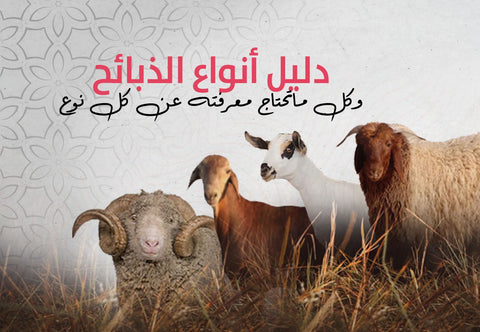Reasons for differences in the weight of the carcass before and after slaughter
Using live weight as a measure is easy to understand and relates to the buying and selling process . However, many people wonder about the weight of the carcass. Is there a difference between the weight of the carcass before and after slaughter?
In this article, we will answer this question by clarifying some concepts such as the net loss percentage and the factors affecting the weight of the animal before and after slaughter .
What is the net profit percentage?
The dressing percentage is the ratio between the weight of the carcass after slaughter, skinning, and trimming the meat to the live weight immediately before slaughter . In other words, the dressing percentage is a term used to describe the difference between the weight of the carcass before and after slaughter. There is a specific and known percentage for each carcass. In sheep, the dressing percentage is between 40 and 45 %.
Factors affecting the purity rate
The purity rate is affected by several factors, which are:
Animal weight before slaughter
The weight of the animal before slaughter greatly affects the dressing percentage. The ideal weight for sheep to obtain the best dressing percentage is 60 kilogram
Belly size and fullness
Overfeeding the rumen leads to an unrealistic increase in the animal's weight before slaughter, which negatively affects the net weight loss rate. Therefore, it is preferable to withhold feed for a period of no less than 12 hours before slaughter.
Head and horn size
It is preferable to slaughter sheep with small heads , because the large head size helps increase the weight lost after slaughter .
Night size
The weight lost after slaughter in large-headed sheep increases due to the increased fat content .
Age and breed
The percentage of pure meat in sheep ranges between 40% and 50 % depending on the age and breed of the carcass . Some types, such as the local sheep, have a large amount of fat in the rear, which reduces the pure meat .
Nutrition
Avoid starving the animal before slaughtering it and provide it with sufficient amounts of water to preserve the pure meat after slaughtering.
Fat and viscera
There are many different types of sheep, and each type differs from the other in the percentage of meat and fat in it . For example, the local sheep has a higher percentage of fat than the Romanian sheep and vice versa . In terms of meat, the Romanian sheep has more meat than the local sheep, but in general, the percentage of meat in the sheep may be 50 %, 60 % or 70 % of its weight. To make sure of this, after the sheep is slaughtered, you can separate the meat from all its other components, such as entrails, wool, etc., and weigh all the meat separately to get an accurate result .
commercial fraud
Some breeders add salt to their food to make the animal drink more water and appear to gain weight when sold, which reduces the net meat percentage .
After learning about the reasons for the difference in the weight of the slaughtered animal before and after slaughter
When purchasing a carcass, make sure to buy it from a reliable place with a team specializing in handling meat, from the breeding process to slaughter and transportation .








Comments (0)
There are no comments for this article. Be the first one to leave a message!